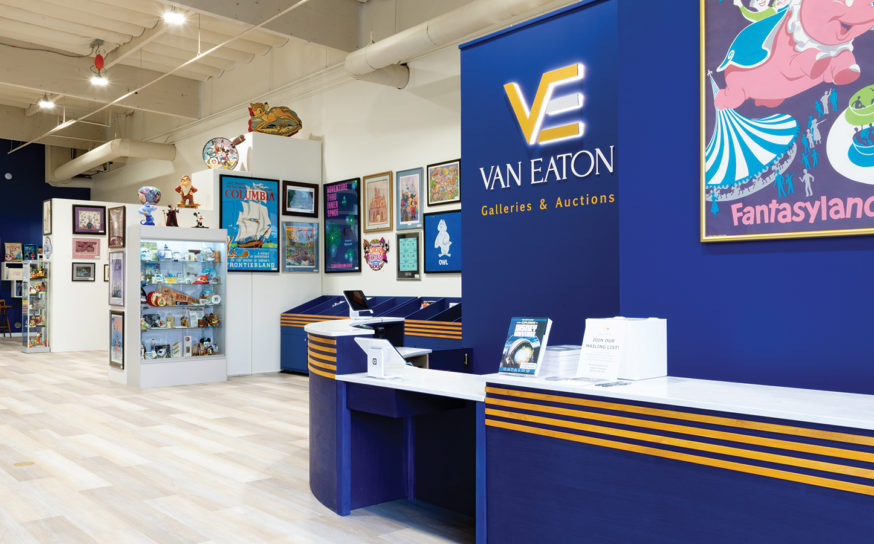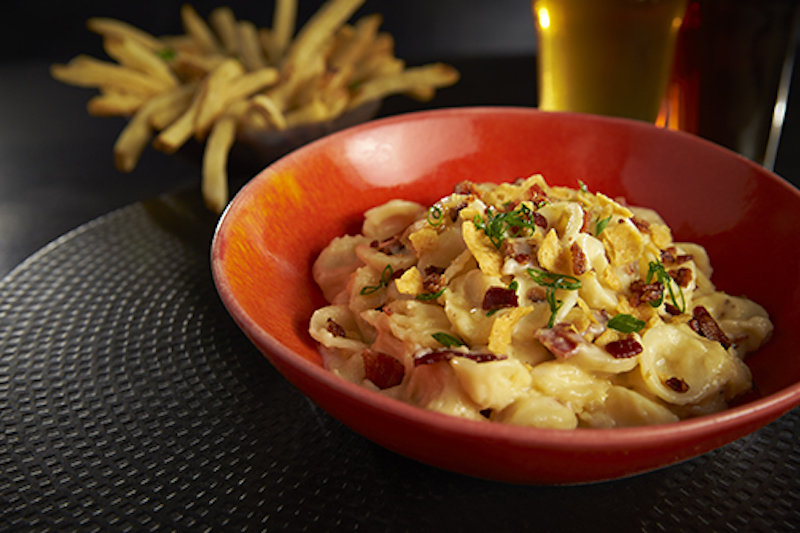
Step Inside the Little Brown Church of the Valley in Studio City
A historical hitching post.
-
CategoryPeople
-
Written byHadley Hall Meares
 It’s 11 p.m. on a Tuesday. On busy Coldwater Canyon in Studio City, traffic whizzes by a small wooden structure surrounded by a white picket fence and blooming roses. At first glance, you might think it was a home. But then you notice all the lights are on, and the front door is wide open. A sign in the yard beckons: “Come in and pray. The door is open night and day.”
It’s 11 p.m. on a Tuesday. On busy Coldwater Canyon in Studio City, traffic whizzes by a small wooden structure surrounded by a white picket fence and blooming roses. At first glance, you might think it was a home. But then you notice all the lights are on, and the front door is wide open. A sign in the yard beckons: “Come in and pray. The door is open night and day.”
For 80 years, the doors of the Little Brown Church of the Valley have been open to everyone, 24 hours a day, 365 days a year. “We don’t even have any locks! Well, we have one lock that locks the front door open,” Senior Minister Rev. Dr. Michael Kosik says. “You go in there at 3 a.m. in the morning, there’s people in there praying.”
The church was founded by Reverend John H. Wells, who envisioned it as a place where wayward souls could reflect and pray after local bars closed. In 1939, on the weedy plot where the chapel now stands, Wells and his wife set up a tent. Soon, with the help of locals in then-sleepy Studio City, they built a small, DIY brown wooden chapel with knotty pine pews and unadorned, wood paneled walls.
“Shortly after that, people started coming, and there’s a little cottage that’s on the property that he lived in,” Reverend Kosik explains. “People would knock on the door and ask if he would marry them. And so he started doing weddings. After the weddings started, they started having worship services there. At first it was nondenominational, just Christian worship services. Today our denomination is the Christian Church (Disciples of Christ).”
The scenic structure soon became a popular spot for California couples looking for a quick, simple wedding ceremony. It became particularly popular with the oft-married folks of the entertainment industry, who were drawn to its relative ease, tolerant attitude and low profile. Over the years, celebrities including Marlon Brando, Debbie Reynolds, Mickey Rooney and George Peppard would get married at the charming chapel.
“We use the phrase ‘church family,’ and sometimes we use it just, you know, throwing it around. But it really is like a family.”
But the most famous couple joined at the chapel were movie star (and future president) Ronald Reagan and starlet Nancy Davis. The besotted pair tied the knot at the chapel on March 4, 1952—the 1,761st marriage performed there. The service was performed by Rev. Wells. Looking on as best man and matron of honor were the movie star William Holden and his actress wife, Brenda Marshall. “People are always interested and asking questions about that,” Reverend Kosik says. “I was even asked one time, ‘Did you marry them?’ No, I’m 56 years old! After the ceremony, the couple went back to the Holden’s home for dinner and cake, and later flew to Arizona for their honeymoon.”
 The Reagans later became members of Bel-Air Presbyterian Church, but they did return to the Studio City chapel in 1992 to renew their vows.
The Reagans later became members of Bel-Air Presbyterian Church, but they did return to the Studio City chapel in 1992 to renew their vows.
A picture of the beaming couple and a copy of their marriage certificate are on display in a glass case. Indeed, the lure of the Reagan love story is so strong that couples have come from all over the world to get married at the same chapel as the presidential pair. After their deaths, church officials noted an uptick in visitors to the sanctuary, saying a prayer for the deceased.
Today the church continues to be a beloved and, at $895, a relatively inexpensive wedding venue. Recently the 23,109th wedding was performed.
“We have people getting married all the time because their parents got married there,” he says. “It’s a tradition for a lot of them. It’s like a legacy.”
So famous is the tiny church—which seats a maximum of 125 people—as a wedding spot, that many don’t realize it’s actually a working church. “I think there is this idea that it’s a wedding chapel, and some people see it that way,” he says. “But also, it’s a great alternative to going to Vegas or having to pay the expense of a big church.”
However, the church’s peaceful, friendly atmosphere occasionally convinces wedding participants and guests to become members of the congregation, which has been growing for decades. In 1989, it merged with the Central Christian Church in Van Nuys, which is now known as Church of the Valley in Van Nuys. Together they are known as the Church of the Valley. Sunday services are held on both campuses, with worship at 8 a.m. and 5 p.m. in the Little Brown Church.
“We have people from all walks of life,” Reverend Kosik says of the congregation’s inclusive spirit. “We have people who even culturally define themselves as Jewish. We have people who grew up in different denominations, different religions. We have people who are gay and straight and everything in between. That’s part of the reason that we really like the open door, because part of it is a metaphor for us as a welcoming place. We have an open door, literally, and everyone is welcome.”
 This includes all people in the surrounding community, be they practicing Christians or not. “The Little Brown Church is kind of the non-church person’s church,” Kosik says. “When people need a wedding, or a memorial service or a baby is born, and they want to dedicate the child, but they don’t have a home church for some reason. I think it’s because the doors are open, and people know it. A lot of people think of it as their church even though they’ve never gone to a worship service.”
This includes all people in the surrounding community, be they practicing Christians or not. “The Little Brown Church is kind of the non-church person’s church,” Kosik says. “When people need a wedding, or a memorial service or a baby is born, and they want to dedicate the child, but they don’t have a home church for some reason. I think it’s because the doors are open, and people know it. A lot of people think of it as their church even though they’ve never gone to a worship service.”
Along with Assistant Minister Reverend VeAnn Clark, Kosik oversees the church’s many charitable endeavors, which include a food pantry that feeds 1,400 people every month, home building in Tijuana, and doing outreach with the Hope of the Valley Rescue Mission. The church even sells its own branded coffee, with proceeds going to charitable services.
When asked what he loves most about the Church of the Valley, the Reverend points to the congregation, and to the children he once taught in Sunday school who grow up and marry in the Little Brown Church. “We use the phrase ‘church family,’ and sometimes we use it just, you know, throwing it around,” Kosik says. “But it really is like a family.”











